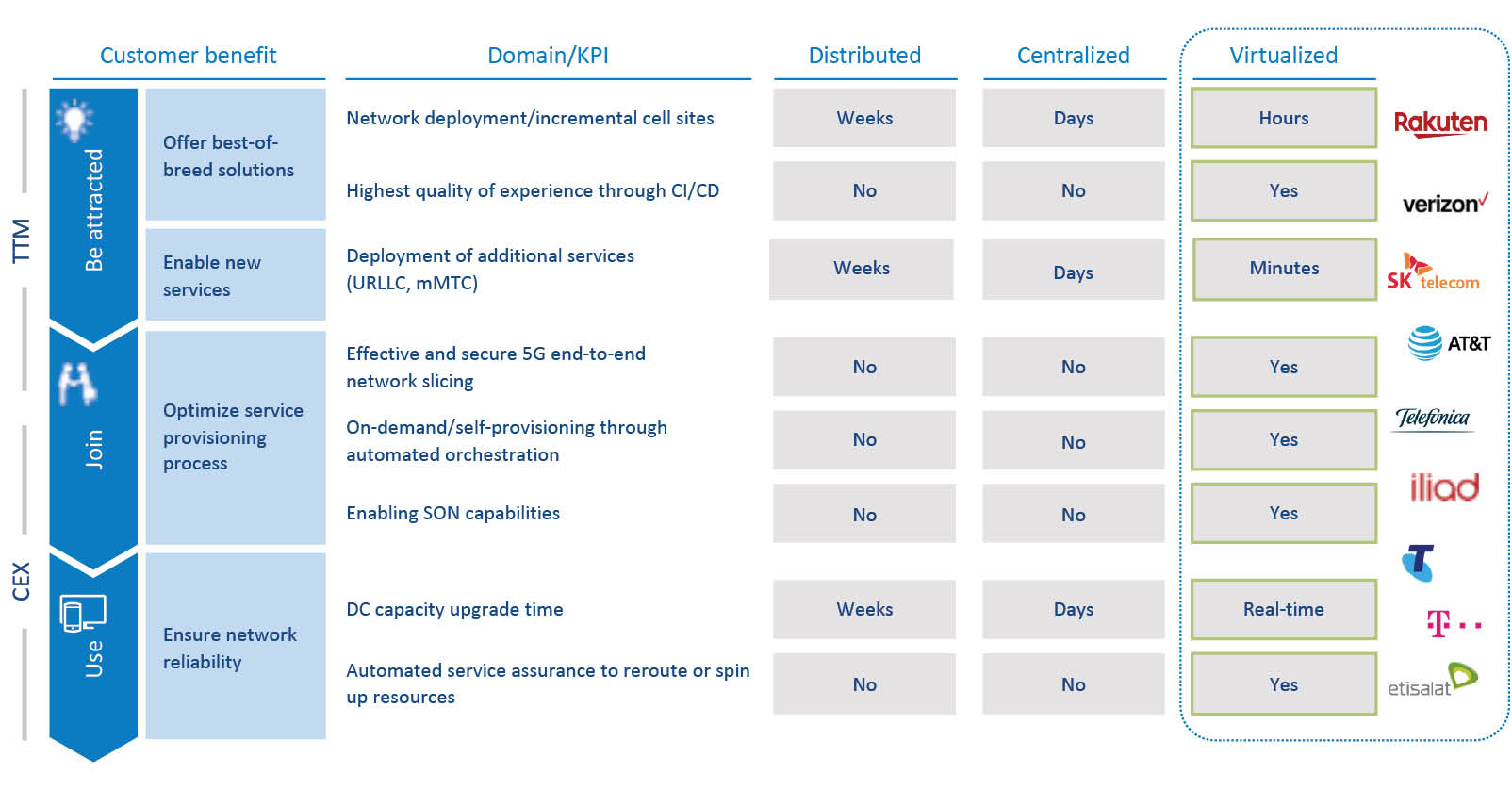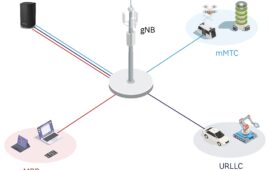Technology developments in the fields of hardware and software disaggregation, network function virtualization and containerization forge architectural changes across mobile networks. To fully reap the benefits of network virtualization, telecom operators must rethink sourcing models, deployment models, and organizational setups.
Mobile network operators must keep pace with growing demand in coverage, capacity, and customer experience. Furthermore, requirements constantly change. Technology elevates consumer and enterprise expectations. Meanwhile, average revenue per user shrinks or at best, stagnates. What’s a telecom operator to do?
5G promises a range of benefits from ultra-reliable low-latency communication (URLLC) to massive data flow to enhanced mobile broadband (eMBB) to massive machine-type communication (mMTC) connections. These features can increase revenue because they expand cellular networks beyond mobile phones. Consumers generally refuse to pay more for 5G and thus telecom operators will need to offer services for industrial, enterprise, first responder, and other use cases.
Achieving higher throughput and lower latencies, however, requires rethinking traditional mobile network architectures. Monolithic telecom infrastructure based on proprietary hardware and closed interfaces doesn’t provide the flexibility, scalability, nor the degree of automation that mobile players seek. The key is embracing virtualization through novel architecture concepts that are already beginning to take hold.
Here are five developments that will accelerate virtualization:
Edge and far-edge data center (DC) infrastructure
Optimal deployment of virtual network functions (VNFs) such as caching close to the user reduces latency, improving quality of experience. Such deployment also increases security, especially for mission-/safety-critical applications, and provides local data termination to relieve backbone network traffic.
Disaggregation of hardware and software
Unbundling of hardware and software (using commercial off-the-shelf compute storage and networking hardware) is nothing new, yet it only recently gained general exposure across networking equipment to help reduce capital expenditure and enable sourcing diversification.
“Softwarization” and virtualization of network functions
End-to-end software-defined networks (SDNs) provide the scalability and automation required for future 5G use cases. SDNs also let network operators customize networks for specific users and adapt networks based on traffic conditions.
Open interfaces
Standardization of application programming interfaces (APIs) between and within network domains allow for vendor competition, hence innovation at lower total cost of ownership. Such open interfaces will let companies focus on specific network functions, adding value as needed.
Software containerization
Moving from dedicated servers and virtual machines to containers on “bare metal” –- virtual network functions (VNFs) on a significantly reduced protocol stack — further increase efficiency, hardware usage, and drive scalability of the network (Figure 1).

Figure 1. This overview of network function virtualization concepts shows how networks migrate from virtual machines to containers. Source: Arthur D. Little analysis
In addition to these architecture concepts, we also see three key market trends acting as catalysts for the large-scale adoption of these technologies:
- Interoperability of vendors within and between the individual network domains (RAN, transport, core, and orchestration) is developing at a rapid pace based on standardizations such as Open RAN (O-RAN Alliance).
- As a result of this expansion, the vendor landscape has drastically broadened, leading to the availability of competitive offerings for all network domains. This, in turn, fosters a clear shift of traditional as well as “new” network equipment providers to move from monolithic telecom network infrastructure to software-based solutions.
- Integration efforts and risks that accompany decoupled and disaggregated offerings are significant. They may prove worthwhile, though: we see an expected network total cost of ownership savings of up to 40 percent, in addition to the benefits of establishing an ecosystem of suitable integration partners.
According to our analysis, leading operators have taken the first steps toward these target networks, but most remain at an early stage of development. The first live deployments — such as those by Rakuten in Japan, AT&T in the US, or Telefonica in selected markets — clearly indicate performance improvements over distributed/centralized network architectures across domains.
Examples of these improvements include reduced time to market for incremental network deployments (mobile sites), as well as for new 5G services such as URLLC or mMTC. Time to market for these services can be reduced from the current requirement of several days to just a few hours.
By achieving both virtualization and cloudification, organizations will be able to provide better quality of experience through continuous integration, continuous delivery, and fully automated self-provisioning and self-optimizing network functions. To track a successful outcome, network operators need to measure key performance metrics between distributed, centralized, and virtualized network deployment models (Figure 2).

Figure 2. Virtualization can improve key performance metrics among distributed, centralized and virtualized network deployment models. Source: Publicly available data; Arthur D. Little analysis.
Requirements for consumers and enterprises are changing and competition is increasing. Now is the time for telecom operators to transform their mobile networks by making use of new technologies to transition from legacy network architecture to a flexible, virtual, open, and automated network. Such networks will be resilient and programmable, enabling adjustment in the face of unforeseen future market demands.
 Karim Taga, Ph.D. is managing partner and global practice leader of the Telecommunications, Information Technology, Media & Electronics (TIME) at Arthur D. Little, an international management consultancy that links strategy, innovation and technology to ensure client success.
Karim Taga, Ph.D. is managing partner and global practice leader of the Telecommunications, Information Technology, Media & Electronics (TIME) at Arthur D. Little, an international management consultancy that links strategy, innovation and technology to ensure client success.





Tell Us What You Think!